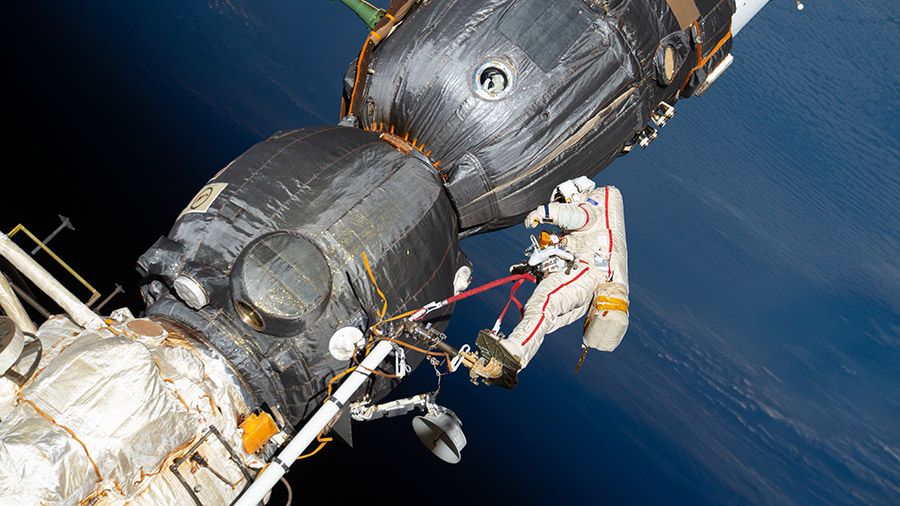Biomedical duties to understand how space affects the human body and develop ways to treat microgravity-induced conditions were the prime research objectives for the Expedition 71 crew on Friday. The orbital residents also continued loading a U.S. cargo craft for its upcoming departure and preparing for a spacewalk at the International Space Station.
Living long-term in the weightlessness environment creates fluid shifts and blood pressure issues that doctors seek to address and promote crew health. The astronauts use a variety of biomedical tools collect their health data and monitoring how their body adapts to microgravity.
One of the most visible symptoms of living in space is a condition called “puffy face.” This is a result of body fluids moving toward a crew member’s head due to microgravity. Astronauts have reported this condition may also cause internal head and eye pressure affecting vision. A new thigh cuff, similar to a blood pressure cuff, is being tested for its ability to prevent space-caused fluid shifts toward an astronaut’s head. NASA Flight Engineers Matthew Dominick and Jeanette Epps partnered together for that investigation performing chest scans with the Ultrasound 2 device, measuring blood pressure, and conducting eye exams. Doctors are exploring if the thigh cuff can be worn in space to counteract the headward fluid shifts for healthier crews.
NASA Flight Engineer Tracy C. Dyson attached electrodes to herself, wore a sensor-packed cap, and operated a portable ultrasound device on Friday. She was measuring her brain blood flow and blood pressure simultaneously. Scientists are studying how the brain regulates blood flow in weightlessness potentially revealing new therapies for spaceflight-induced and Earthbound blood pressure conditions.
NASA astronaut Mike Barratt spent all day Friday tending to mice living in rodent habitats located in the Destiny laboratory module. He refilled food and water and cleaned the habitats where the mice are being treated with a gene therapy that may improve eye health in space.
All four NASA astronauts will go into the weekend readying the SpaceX Dragon cargo spacecraft for its undocking scheduled for April 26. The quartet has been taking turns all week transferring cargo in and out of Dragon. Next week, the NASA foursome will be making room inside the spacecraft and packing finalized experiments that will be returned to Earth for analysis.
Spacewalk preparations were underway once again in the Roscosmos segment of the orbital laboratory. Cosmonauts Oleg Kononenko and Nikolai Chub checked their Orlan spacesuits for leaks, tested their suits’ communications and medical components, and reviewed procedures to ready the Poisk airlock for their April 25 spacewalk. The duo will exit the station for seven hours of hardware installation work on the Poisk module.
Flight Engineer Alexander Grebenkin joined his Roscosmos crewmates on Friday afternoon for the Poisk airlock procedure reviews. He started his day pedaling on a treadmill for a periodic fitness evaluation. Grebenkin completed his shift after practicing futuristic spacecraft and robotic piloting techniques that may be used on planetary missions.
Learn more about station activities by following the space station blog, @space_station and @ISS_Research on X, as well as the ISS Facebook and ISS Instagram accounts.
Get weekly video highlights at: https://roundupreads.jsc.nasa.gov/videoupdate/
Get the latest from NASA delivered every week. Subscribe here: www.nasa.gov/subscribe


